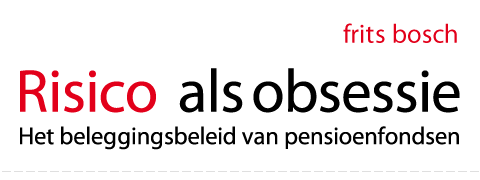
Recensies
EuroProperty: Near miss for Dutch pensions
Following flawed investment models, pension fund managers swap real estate for volatile equities
By Bert Erik ten Cate
Although the Dutch pension fund sector is one of the most mature in the world, that fact did not avert a crisis. The system’s funding ratio, the money needed to cover paying out pensions, dropped from a comfortable 230 in 1990 to below 100 in 2008. Today, the funding ratio is back at 100. Pension fund consultant Frits Bosch explains in his new book, Risico als Obsessie, that it was a combination of factors that led to the depletion of the pension funds. He argues that the pension funds should have stuck with real estate because it is the best-performing asset class over a live-, 10-, 15- and 20-year period. But they bought equities instead. Bosch identifies three main causes of the crisis. The first is the Dutch government, which in the 1990s threatened to tax the high surpluses languishing in the pension funds. Companies responded by channelling pension fund money back to their own profit-and-loss accounts and employees could retire early, when they were in their early fifties, enjoying 70% of their last-earned salary. At the same time, the pension funds’ assets and liabilities no longer matched as pension funds introduced payment holidays and discounts. The premiums no longer covered the liabilities. Pension funds also were hit by falling interest rates and by the fact that more participants lived longer. Finally, the pension funds are to blame for the problems because they diversified too aggressively and unthinkingly. The Dutch pension industry rose from €1bn in 1965 to €10bn in 1982 and hit a high of €776bn in the fourth quarter of 2007. From 1956 to 1983, Dutch pension funds followed a conservative asset mix. In 1956, bonds accounted for 34% of the portfolio, private loans for 40%. Real estate and shares accounted for only 7% and 6% respectively. But in 1983, share prices started to rise. Attracted by the higher returns, pension fund mangers increased their equity investments to 50%. However, the managers were unsure of future returns and called in external consultants, who provided them with asset liability management studies (ALM).
Volatility neutralises ALM models
Bosch is not a fan of ALMs because an increase in volatility on the stock exchange makes the models irrelevant. When share prices rose in the 1990s, ALMs pointed to higher equity allocations. They thus acted as catalysts in creating risky portfolios and self-fulfilling prophecies of ever-rising prices. And ALMs depend usually on historical data, which can be flawed. Bosch argues that pension fund managers should find the asset classes that match the desired risk-return profile of the portfolio. It sounds simple, but he urges pension fund managers to keep using their heads and not be blinded by models. Bosch asks whether pension funds are really the long-term investment they are meant to be. Because the average duration of a pension fund is 15 years or longer does not mean that they are long-term investments. In reality, pension fund managers follow shorter investment horizons. That requires a more pro-active approach and strong views on the performance of different asset classes. Bosch urges pension fund managers to define long-term goals first and translate those through short-term goals. Bosch also questions fiduciary asset management, the outsourcing of investment management to third parties. He points out that pension fund managers are ultimately responsible for the performance of the fund. Bosch blames the Dutch central bank for a lack of control. Bosch’s overriding message is that fund managers should stop using products and models they don’t understand.
